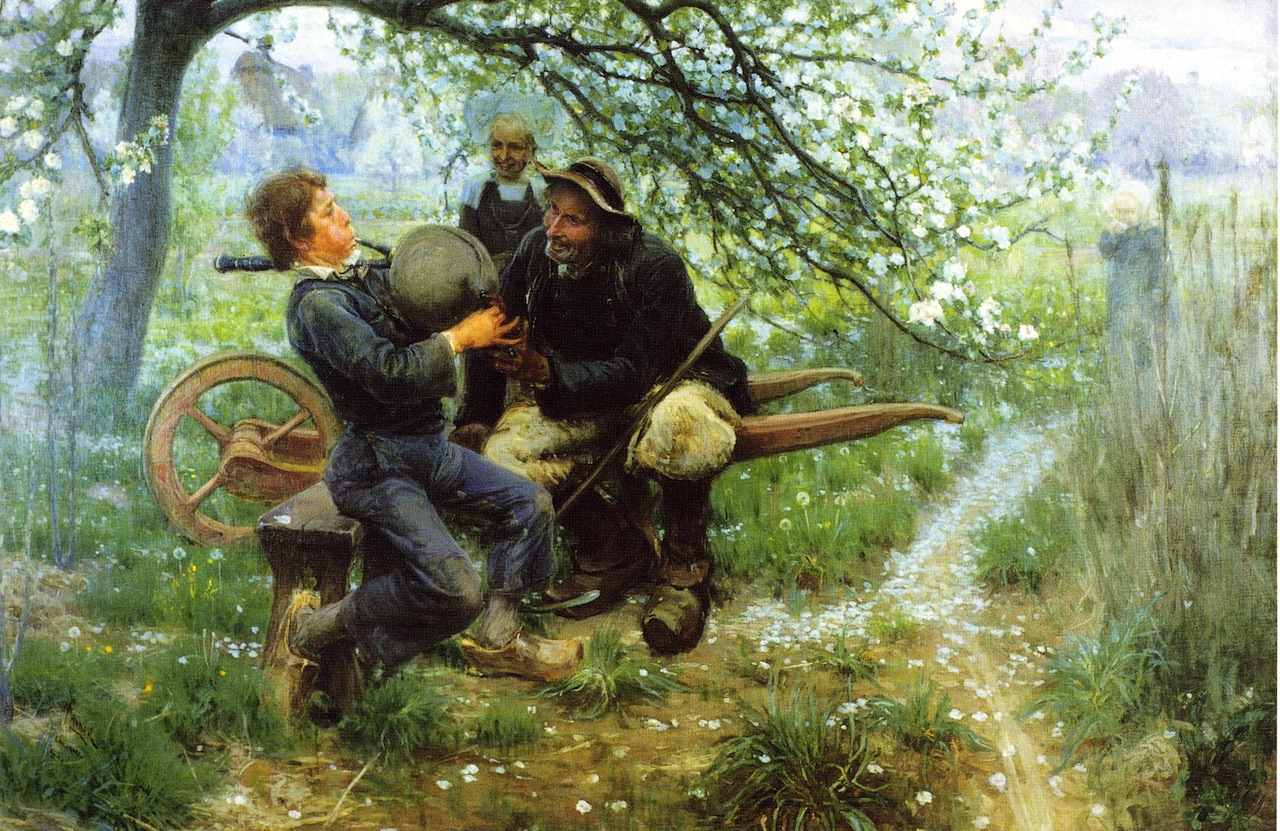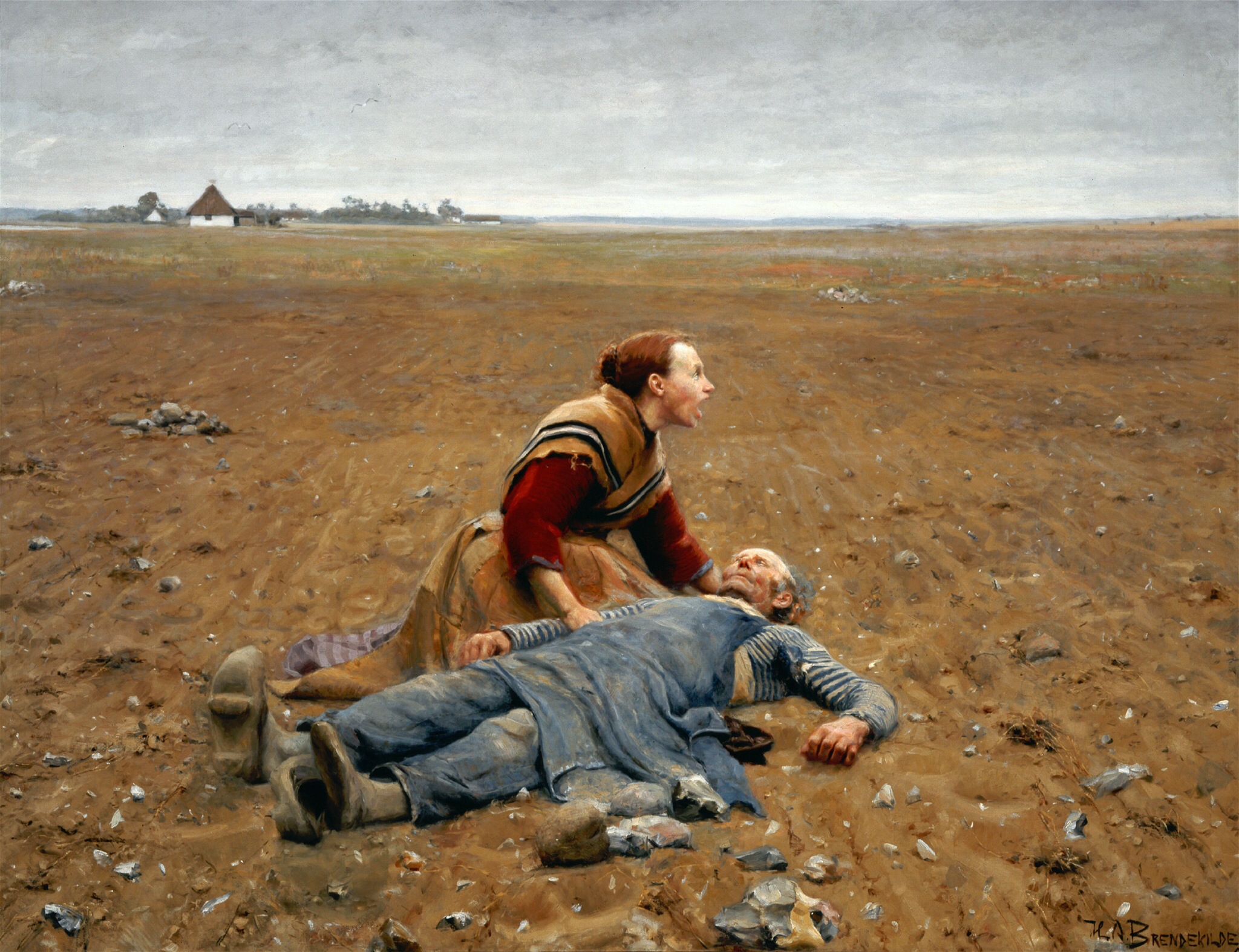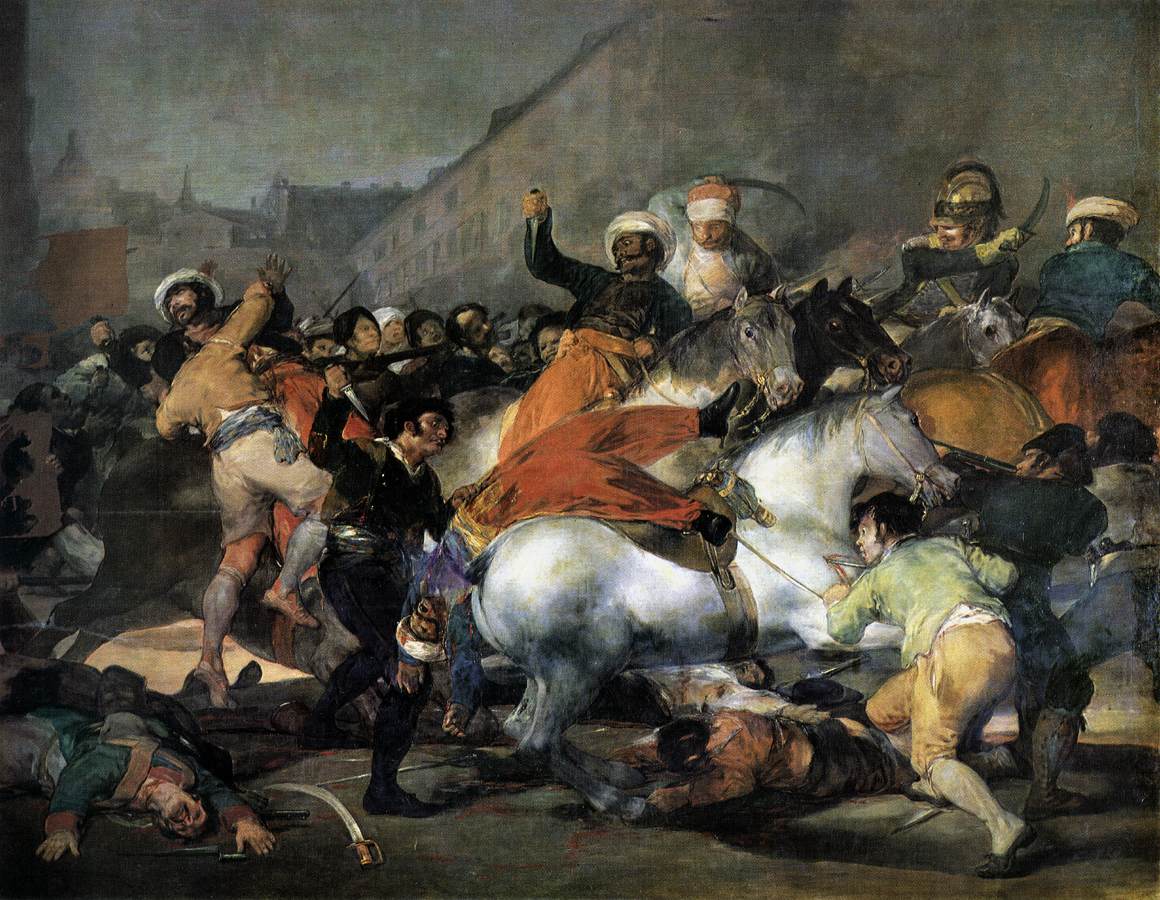Other
Australia
Like the Hudson river school, the German Dusseldorf school also inspired the Austrian born painter Eugene Guerard. Starting as a golddigger in the Victorian goldfields, he became one of the greatest landscape painters of Australia.
Austria
Austria had some great orientalist painters. Besides Leopold Carl Muller who was nicknamed by his students “Muller the Egyptian”, two other artists specialised in the exotic world of the orient : Ludwig Deutsch and Rudolf Ernst. These two friends settled in Paris close to their hero : Jean Leon Gerome with his photorealistic technique. Amazing colourful and full of detail they both produced masterpieces like the palace guard.
Belgium
Like the French Jehan Georges Vibert, Georges Croegaert also specialized in anticlerical art. Petrus van Schendel chose another genre : candle-lit night scenes. More about him in the light and dark tour. A less known Belgian painter is Antoine Wiertz. He won the prestigious prix de Rome and left us a collection of sometimes macaber art, check the guided horror tour. Finally, the colonial relationship with Congo resulted in paintings of dark Africa among which Madeleine Lefevbre must be named.
Brazil
The great realist painter of Brazil is Jose Ferraz de Almeida junior. He studied in Paris as one of the students of Cabanel. He was stabbed to death by his cousin because of a love-affair.
Czech Republic
Jakub Schikaneder is a painter who loved nocturnal scenes with a sentimental mood. One of his more known works is murder in the house. His dark fascination also resulted in death scenes like necropolis or drowned.
Denmark
The father of the Danish golden age is Christoffer Wilhelm Eckersberg. He studied under Jacques Louis David. On his turn, Eckersberg trained many young Danish painters among which Christen Kobke. The second half of the 19th century was dominated by Carl Bloch. He was asked to decorate the chapel of the Frederiksborg castle with scenes of the life of Christ in which he succeeded masterly. Finally Peder Mork Monsted must be named. He made fantastic landscape paintings.
Finnland
The great Finnish painter Albert Edelfelt created many impressive canvases. Among his masterpieces are funeral of a child and his portrait of professor Runeberg.
Greece
Greece was an emergent state in the19th century. After their war of independance, the German prince Otto became their first king. The newly trained Greek painters studied at the German academy of Munich. Nikolaos Gyzis made great portraits and genre paintings like capuchin monk and the barber. Konstantinos Volanakis was the great seascape painter of Greece.
Italy
Francesco Brunery studied with Jean Leon Gerome and specialised in paintings of cavaliers and cardinals. He shared his choice for anticlerical art with Andrea Landini. Another Italian realist painter is Telemaco Signorini. His later paintings are more associated with impressionism.
Netherlands
The academic painter Jan Willem Pieneman did a lot of history painting among which his masterpiece the battle of Waterloo. One of his students was Jozef Israels, a Jewish painter who was inspired by the French Realist and Barbizon movement and was the founding father of the Hague school. His social realism reflected in paintings of poor fisherman and farmer families and was an inspiration for Vincent van Gogh. An academic portrait painter who must be mentioned is Hubert Vos, see the guided tour of traveller-artists to discover more of him. Finally some great romantic painters deserve mention among which Barend Cornelis Koekkoek and Wijnand Nuijen.
Norway
Johan Cristian Dahl and Hans Gude are Norway’s most famous romantic landscape painters. Although both painters made study trips through Europe, they had a strong preference for their home country with its fjords, mountains and seacoasts. A painter of the second half of the 19th century is Erik Werenskiold. His photorealistic technique is stunning and resulted in masterpieces like the funeral.
Philippines
Two Philippine painters entered the Spanish National Competition of Fine Art in 1884 and both were awarded prices. Juan Luna won the first gold medal with his massive canvas “Spoliarium” about the roman gladiators and Felix Resurreccion Hidalgo won the ninth silver medal also with a painting about the romans mocking christian women. The fact that Phillipine painters, being colonized by Spain, surpassed Spanish painters, was felt as a triumph.
Poland
Henryk Siemiradzki was a true academic painter with a subject choice of the Greek-Roman world and the life of the early christians. Jozef Brandt was the founding father of the Munich School of Polish painters and excelled in war paintings and depictions of horses. He specialised in 17th century warfare in which the battle of Vienna against the Ottoman empire took place. This resulted in orientalistic scenery. His fellow Munich School painter Alfred Wierusz-Kowalski became renowned for his winter landscapes with wolves and horse led carriages. Finally Adam Styka must be mentioned. This 20th century painter was nicknamed the master of sunlight and has a rich oriental portfolio full of colour and joy. Afterwards his attention shifted to the American Wild West.
Portugal
Not very much known, the early 20th century Portugese painter Guilherme d’Oliveira Marques chose to depict central African scenery and people and settled in Congo.
Spain
The great romantic painter Francisco Goya is famous for his depiction of the Peninsular Napoleonic war and its mutual atrocities. His third of May 1808 illustrates the revenge of the French troops because of the Madrid revolt of the second of May 1808. Enrique Simonet was a more academic painter. He made an impressive painting about a dead woman being dissected in a morgue. Another academic painter who died early, was Eduardo Zamacois Zabala. Trained in Paris and a friend of Jehan Georges Vibert, he also painted anti-clerical art. The brothers Jose Jimenez and Luis Jimenez Aranda made some great genre paintings. The catalan Maria Fortuny had an international reputation and some orientalistic themes like his arabic chief. Joaquin Sorolla y Bastida started his career with a social-realistic style but transformed later in a more impressionistic style. His themes are often associated with the sea.
Sweden
Carl Gustaf Hellqvist was an important history painter. He won a gold medal with his masterpiece Valdemar Atterdag holding Visby to ransom, 1361. To prevent the burning of their city, the citizens of Visby had to fill three barrels with gold and jewelry. Another famous Swedish painter is the late 19th century Anders Zorn. He was asked to make royal portraits and did a lot of female nudes.
Switzerland
Trained in the Dusseldorf academy, Arnold Bocklin did not become a traditional landscape painter but chose a more symbolic style, thereby creating his own universum. He influenced many artists among which Salvador Dali and Rachmaninoff. His most famous painting is the isle of dead.
Turkey
The ottoman Osman Hamdi Bey studied under Jean Leon Gerome in Paris. Besides painting he also did a lot of archeological research. A famous painting of him is the tortoise trainer.




